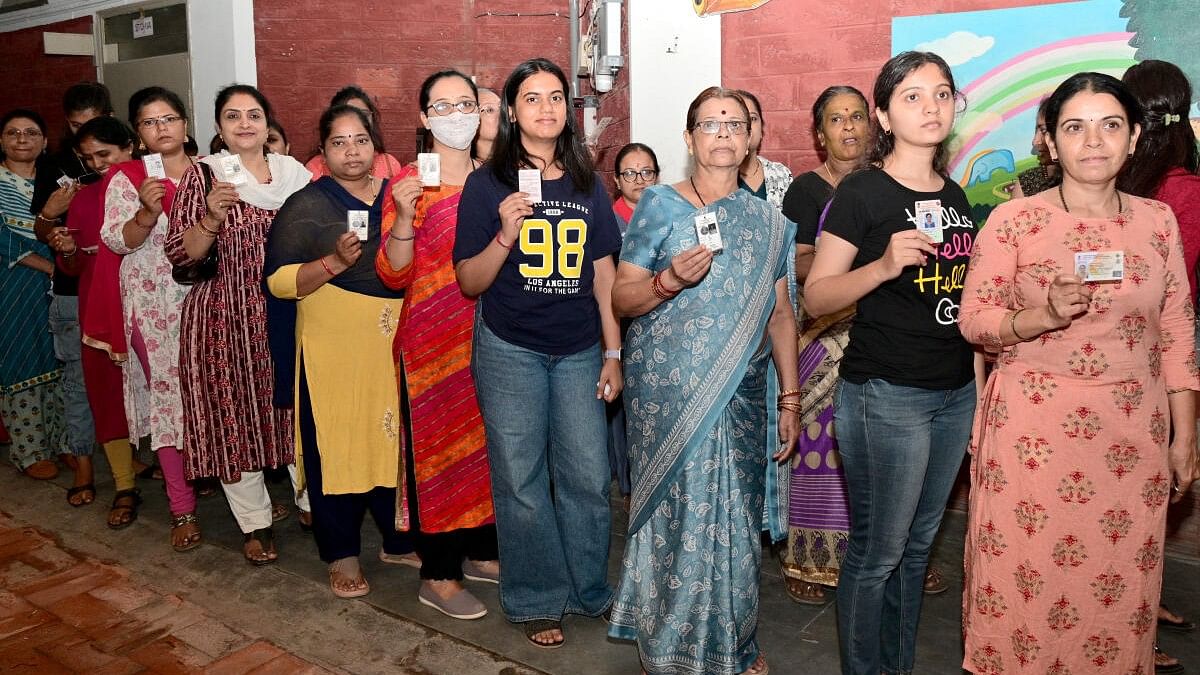
Women stand in queue to exercise their franchise at a polling station at Chinmaya Vidyalaya at Vivekanand Colony in Hubbal.
Credit: DH Photo
Bengaluru: The Lok Sabha election results are only three days away, but political parties and pundits are still figuring out a puzzling data point: more women than men voted in 70 Assembly constituencies during the two-phased polls in Karnataka.
These 70 Assembly segments are spread over 22 Lok Sabha seats.
Five years ago, the women voter turnout was more than men in only 22 Assembly constituencies falling in nine Lok Sabha segments.
This time, 21.18 lakh more women voted in Karnataka compared with 2019, according to voter turnout data analysed by DH.
Breaking up the numbers threw up more insights. More women voted than men in 61 Assembly segments in south Karnataka. Up north, there were nine segments where women led the polling. In 2019, all 22 Assembly segments where women voted more than men were in south Karnataka.
Overall, the number of women who voted was 12% more than in 2019.
In north Karnataka, not a single Assembly segment had women voting more than men in 2019. But this time, nine Assemblies saw women beating men to voting.
In the 2019 polls, the Shimoga Lok Sabha segment saw only Bhadravathi and Byndoor Assemblies where more women turned out to vote than men. This time, women aced in four Assemblies.
In Uttara Kannada, it was only Bhatkal in 2019 unlike three Assemblies this time. At Dakshina Kannada, women voted more than men in all the eight Assemblies in both elections.
But who got the ladies’ votes?
Congress sees this as good news given the party’s effort to woo women voters with the ‘guarantee’ schemes. Karnataka is the first state where Congress put its ‘guarantee’ model into action.
“The general sense is that since women are the biggest beneficiaries of the guarantees, they will vote for Congress,” IT/BT Minister and government spokesperson Priyank Kharge says.
“In my own constituency (Chittapur), women voted for Congress irrespective of the men in their families. It looks like more women voted for us due to the financial stability we have brought into their households.”
The BJP feels that women voted in favour of Prime Minister Narendra Modi because of the 33% reservation in Parliament and Assemblies, free housing and the Ujjwala scheme.
Also, the Ram temple has had an emotional connect with women.
“The BJP has been working on drawing women’s support for a long time,” BJP general secretary V Sunil Kumar, who was involved in the party’s Lok Sabha poll management, says.
“Our party has been at the forefront of pro-women schemes since 2006 when we first came to power in Karnataka. Apart from this, the party’s door-to-door campaign helped bring more women out to vote this time.”
Political analyst Sandeep Shastri says women generally vote in favour of their family’s economic stability and welfare.
“At this juncture, we can only say that women voter turnout was more. If you are going to ask me if this is any indication of which party got more votes, then it will be difficult for anyone to say,” Shastri says.
“Both parties have announced ‘guarantees’ aimed at winning over women. We will know only on June 4.”